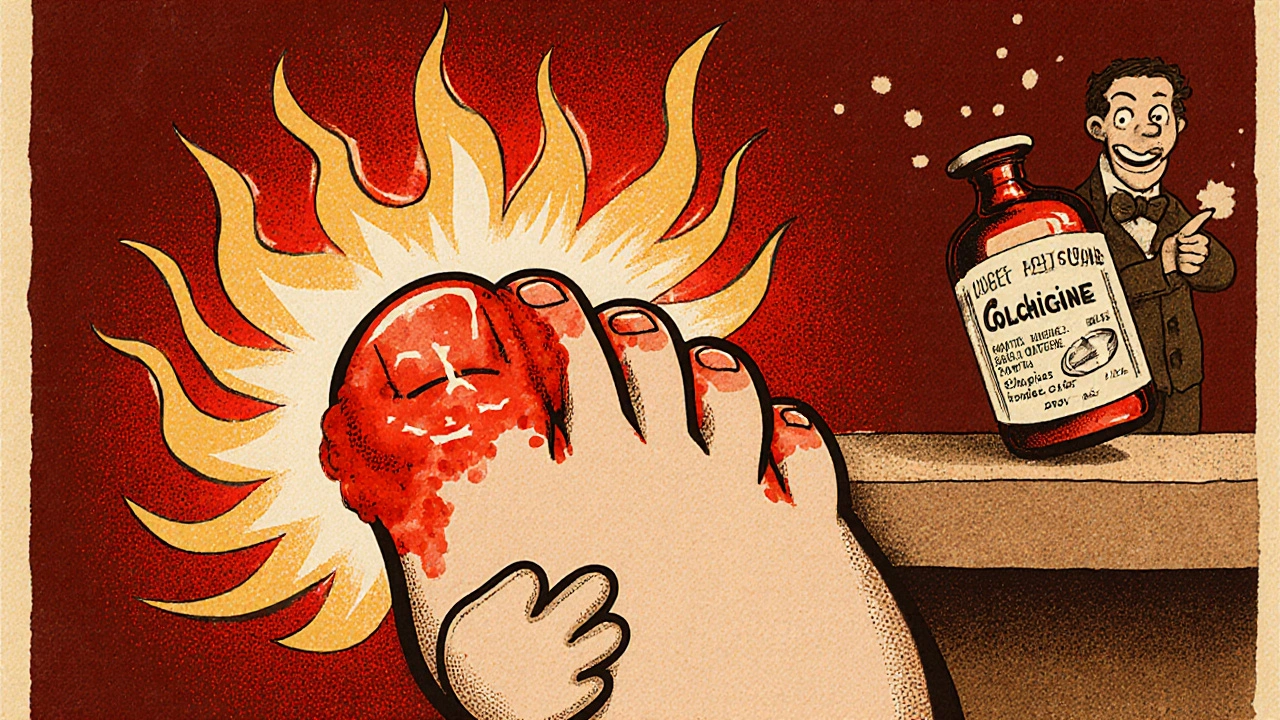Colchicine: How It Works, When to Use It, and What to Watch For
When dealing with colchicine, a plant‑derived alkaloid that blocks microtubule formation and reduces inflammation. Also known as Colcrys, it’s a first‑line option for sudden joint pain and a lifelong therapy for certain hereditary fevers. Because it acts on the cellular skeleton, colchicine can halt the rapid influx of white blood cells that fuels swelling.
One of the most common reasons doctors prescribe colchicine is gout, a crystal‑induced arthritis caused by high uric acid levels. In a gout flare, uric acid crystals settle in joints, triggering intense pain. Colchicine steps in by preventing the microtubules that neutrophils need to migrate, cutting down the inflammatory burst. This direct link—colchicine treats gout attacks by inhibiting microtubule polymerization—is a classic example of a drug‑disease relationship.
Beyond Gout: Other Conditions That Benefit
Besides gout, colchicine shines in familial Mediterranean fever (FMF), an inherited autoinflammatory disorder marked by recurring fevers and abdominal pain. Here, daily colchicine suppresses the faulty inflammasome activity that drives attacks, keeping patients symptom‑free for most of the year. The drug’s anti‑inflammatory power also extends to pericarditis, Behçet’s disease, and even certain dermatologic disorders, showing how a single mechanism can address multiple inflammatory pathways.
In all these uses, the core connection is clear: colchicine’s ability to block microtubule assembly (a process essential for cell division and immune cell movement) translates into reduced inflammation. This relationship—colchicine is a microtubule inhibitor that dampens immune response—underpins why it’s trusted for both acute attacks and chronic management.
When you start colchicine, dosing matters. For an acute gout flare, a typical regimen is 1.2 mg followed by 0.6 mg one hour later, then 0.6 mg once or twice daily for a few days. For FMF, the dose is usually 1.5–2.0 mg daily, adjusted to keep attacks at bay while avoiding toxicity. Because the drug is cleared by the kidneys and liver, patients with renal or hepatic impairment need lower doses and close monitoring.
Side effects are often the deal‑breaker for many. The most frequent complaint is gastrointestinal upset—nausea, vomiting, or diarrhea—especially at higher doses. Rare but serious issues include bone marrow suppression, muscle toxicity, and drug interactions that raise colchicine levels (think clarithromycin or cyclosporine). The rule of thumb: if you notice unexplained bruising, persistent fatigue, or muscle pain, contact your pharmacist or doctor right away.
Safety tips round out the picture. Always take colchicine with food to lessen stomach irritation, and keep the medication out of reach of children—ingestion of even a single tablet can be dangerous for a small child. Regular blood tests (CBC, liver enzymes, kidney function) help catch problems early, especially for long‑term users. Lastly, never combine colchicine with other anti‑inflammatories like NSAIDs without professional guidance; the combo can increase the risk of kidney injury.Below you’ll find a curated set of articles that dive deeper into each of these topics. Whether you’re looking for dosing charts, side‑effect management, or the latest research on colchicine’s off‑label uses, the collection is organized to give you quick answers and practical takeaways. Explore the posts to sharpen your understanding and make informed choices about this versatile medication.
How Colchicine Relieves Gout Pain & Inflammation: Mechanism Explained
by Melissa Kopaczewski Oct 16 2025 9 MedicationsLearn how colchicine eases gout pain by blocking microtubules and the inflammasome, its dosing, safety tips, and how it compares to NSAIDs and steroids.
READ MORE
